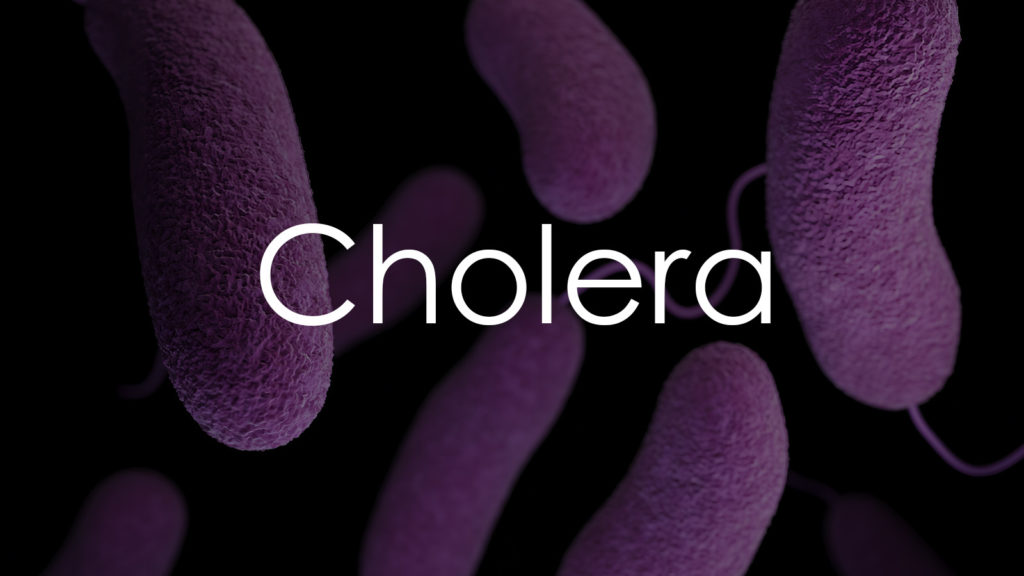Cholera, a severe gastrointestinal infection caused by the bacterium Vibrio cholerae, remains a significant global health concern. Characterized by acute watery diarrhea and rapid dehydration, cholera outbreaks are closely linked to inadequate access to clean water and proper sanitation. This article offers an in-depth exploration of cholera, discussing its causes, transmission, symptomatology, diagnostic procedures, and treatment options. Emphasizing its prevalence in regions with compromised water systems and hygiene practices, the article underscores the importance of understanding cholera for effective prevention and management strategies.

Causes
Cholera is primarily caused by the bacterium Vibrio cholerae, which is found in water or food sources contaminated by feces from an infected person. The following factors contribute to the spread and severity of cholera:
- Vibrio Cholerae Bacteria: These bacteria release cholera toxin, leading to severe diarrhea. They primarily exist in two forms — O1 and O139 — which are responsible for cholera outbreaks.
- Contaminated Water: The most common transmission route is through drinking water contaminated with the bacterium. This is typical in areas with inadequate water treatment, poor sanitation, and open defecation.
- Unsafe Food: Consumption of food contaminated with Vibrio cholerae, often due to poor hygiene practices in food preparation or eating food contaminated by infected water.
- Environmental Factors: Regions with inadequate sanitation, overcrowding, and lack of clean drinking water are at a higher risk for cholera outbreaks.
- Risk Factors: Individuals with lowered immunity, malnutrition, or those living in or traveling to areas with poor sanitation are at increased risk.
Symptoms
Cholera is characterized by a sudden onset of symptoms, which can range from mild to life-threatening. Key symptoms include:
- Watery Diarrhea: Profuse, watery diarrhea, often described as «rice-water stools,» is the hallmark of cholera. It can lead to rapid dehydration.
- Vomiting: Occurs in conjunction with diarrhea and contributes to the rapid loss of fluids and electrolytes.
- Rapid Dehydration: Due to the extreme loss of fluids, dehydration can occur within hours. Signs include lethargy, dry mouth, sunken eyes, and reduced urine output.
- Muscle Cramps: Resulting from significant electrolyte imbalances, particularly a loss of potassium and sodium.
- Severe Cases: In severe instances, dehydration can lead to shock, which may be life-threatening if not treated promptly.
- Other Symptoms: May include fever and a sense of illness, although these are less common.
The rapid onset and progression of symptoms in cholera necessitate swift medical intervention to prevent serious health complications and fatalities. Recognizing these symptoms, especially in at-risk regions, is crucial for prompt treatment and containment of potential outbreaks.
Diagnosis
Prompt and accurate diagnosis of cholera is essential for effective treatment and controlling outbreaks.
- Clinical Diagnosis: Initial diagnosis is often based on the presentation of symptoms, especially in areas where cholera is common. Severe, watery diarrhea and rapid dehydration in an endemic area are strong indicators.
- Stool Sample Testing: Laboratory testing of stool samples is the definitive method for diagnosing cholera. Culturing the bacteria from stool can confirm the presence of Vibrio cholerae.
- Rapid Diagnostic Tests: These tests can provide quick results and are useful in areas where laboratory testing is not readily available. However, they may not be as reliable as culturing the bacteria.
- Differential Diagnosis: It’s important to distinguish cholera from other types of acute diarrheal illnesses for appropriate treatment and public health interventions.
Treatment
The primary goal in treating cholera is to replace lost fluids and electrolytes due to severe diarrhea.
- Rehydration: Oral Rehydration Salts (ORS) solution is the mainstay of treatment for cholera. In severe cases, intravenous fluids may be necessary.
- Antibiotics: While rehydration is critical, antibiotics can reduce the duration and severity of the illness. They are particularly useful in severe cases of cholera.
- Zinc Supplementation: This can be beneficial for children suffering from cholera, as it can help reduce the duration and severity of diarrhea.
- Nutritional Support: Continuing to eat and drink maintains intestinal function and speeds up recovery.
- Monitoring and Supportive Care: Continuous monitoring for signs of dehydration and electrolyte imbalances is essential, especially in severe cases.
Prevention
Prevention strategies for cholera focus on improving water and sanitation and promoting good hygiene practices.
- Safe Drinking Water: Access to clean and safe drinking water is crucial in preventing cholera. Boiling, filtering, or chemically treating water can reduce the risk of cholera in areas where water safety is compromised.
- Food Safety: Proper food hygiene practices, including washing and cooking food thoroughly, are important in preventing cholera.
- Sanitation and Hygiene: Adequate sanitation facilities and practices, such as regular handwashing with soap, are key in preventing the spread of cholera.
- Public Health Measures: Public health education campaigns, surveillance systems, and rapid response to outbreaks are essential components of cholera prevention.
- Vaccination: Oral cholera vaccines are available and can be used in outbreak situations and for high-risk populations.
- Travel Precautions: Travelers to areas where cholera is prevalent should follow food and water safety guidelines and consider vaccination.
Effective prevention and treatment strategies, coupled with public health interventions, are essential for controlling cholera, especially in regions where the disease is endemic.
Conclusion
In summary, cholera is a preventable yet potentially fatal disease that primarily affects areas with poor sanitation and limited access to clean water. The fight against cholera encompasses more than just medical treatment; it involves a concerted effort in improving water and sanitation infrastructure, promoting hygiene practices, implementing effective public health policies, and ensuring access to vaccines. Global efforts to combat cholera continue, with an emphasis on both emergency response to outbreaks and long-term preventive measures. Through continued education, research, and international cooperation, significant progress can be made in reducing the impact of cholera worldwide.